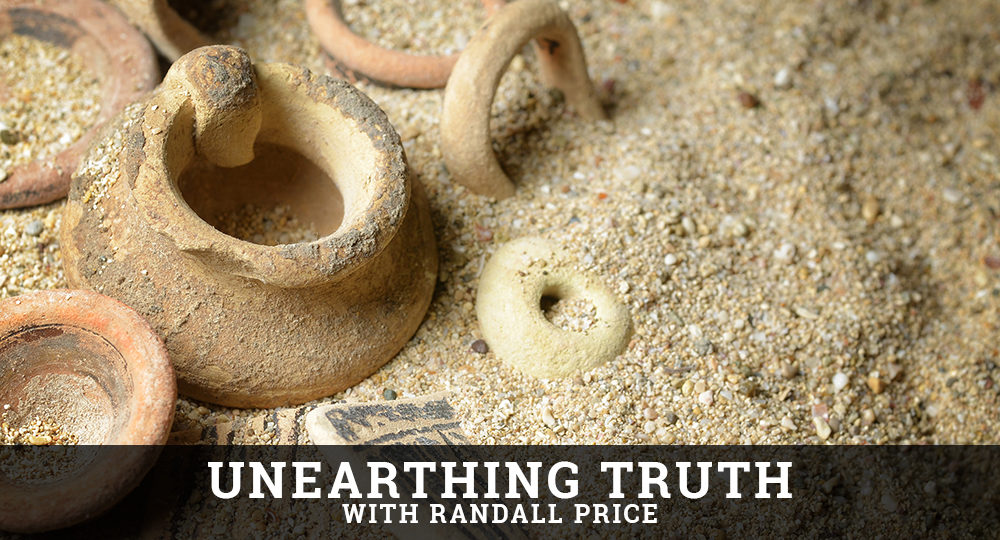Digging Up King David
Scripture records King David’s rise from a lowly shepherd boy to Israel’s king and head of a royal dynasty that includes the promised Messiah. However, since many critics have viewed the Bible as a literary composition written centuries later than David, they concluded this larger-than-life individual was fictional.
Until the end of the 20th century, David’s name had not appeared in the archaeological record. But in 1993, during excavations at the ancient site of Tel Dan in the modern Golan Heights, a broken fragment of a basalt stele was discovered in secondary use as a wall-building material. An Aramaic inscription on it commemorates Syrian King Hazael’s military victory against Israel and Judah’s allied forces. A preserved line of the inscription reads, “[I killed Jeho]ram son of [Ahab] king of Israel, and I killed [Ahaz]iahu son of [Jehoram kin]g of the house of David.”1 The term house of David appears 26 times in the Hebrew Bible as an official designation for the Davidic dynasty. The stele inscription marked the first archaeological evidence of King David’s existence.
Furthermore, a foreigner made this stele around 841 BC. Critics had argued that the Israelite scribal elite invented David in the 6th century BC, but this enemy of Israel acknowledged 300 years earlier that David and his descendants existed and still ruled from Judah about 150 years after David’s death.
This finding led to other discoveries of David’s name. The 9th century BC Mesha Stele (Moabite Stone) also includes the term house of David.2 Egyptian hieroglyphics on the wall of the Bubastis Portal at the Temple of Amun in Karnak, which report the campaign in Israel and Judah (925 BC) of Pharaoh Shoshenq I (biblical Shishak), also list David’s name.3 After David’s death, 20 of his descendants succeeded him on the throne; and archaeology has produced numerous finds attesting to these Davidic kings, including royal seals with royal names in five consecutive generations.4
In the 21st century, archaeologists have added even more finds associated with David. Israeli archaeologists in Jerusalem have uncovered walls and fortifications associated with the ancient City of David that were built upon and utilized the remains of earlier Canaanite and Jebusite fortifications and water systems, just as the Bible records for David’s conquest of the Jebusite city (2 Sam. 5:6–10). Further, a massive 12-story, stepped-stone structure at this site revealed the foundation on which David began to build his city (v. 9). It may have served as a retaining wall buttressing either his “Fortress of Zion” or his royal palace.5
Another palace from the time of David was found in Khirbet Qeiyafa guarding the ancient border between Judah and the Philistines. This city lies within sight of the Elah Valley, where David killed the Philistine giant Goliath.6 This battle’s authenticity is confirmed by a potsherd found at the site of Tel es-Safi (biblical Gath), the giant’s home, with the name “Goliath” scratched on its surface.7 The potsherd dates to almost a century after Goliath’s life, providing evidence that others in his hometown preserved his memory by adopting his name.
Critics no longer deny King David’s historicity. Archaeology has demonstrated that David and his kingdom were real and accurately recorded in the Bible.
ENDNOTES
-
-
-
- Avraham Biran and Joseph Naveh, “An Aramaic Stele Fragment from Tel Dan,” Israel Exploration Journal 43 (1993): 81 and “The Tel Dan Inscription: A New Fragment,” Israel Exploration Journal 45 (1995): 13.
- Michael Langois, “The Kings, the City and the House of David on the Mesha Stele in Light of New Imaging Techniques,” Semitica, vol. 61, 2019, 23–47.
- K. A. Kitchen, On the Reliability of the Old Testament (Grand Rapids, MI: Eerdmans, 2006), 93.
- Lawrence Mykytiuk, “53 People in the Bible Confirmed Archaeologically,” Biblical Archaeology Society, September 3, 2024 (tinyurl.com/DavidDescendants).
- Nadav Na’aman, “The Interchange Between Bible and Archaeology: The Case of David’s Palace and the Millo,” Biblical Archaeology Review, 40:1 (January/February 2014), 61.
- Yosef Garfinkel and Saar Ganor, “Khirbet Qeiyafa: Sha’arayim,” The Journal of Hebrew Scriptures, vol. 8, article 22, 5.
- Aren M. Maeir, “Comment on the news item in BAR on the ‘Goliath Inscription,’” The Tell es-Safi/Gath Archaeological Project Official (and Unofficial) Weblog, February 16, 2006 (tinyurl.com/GoliathName).
-
-







